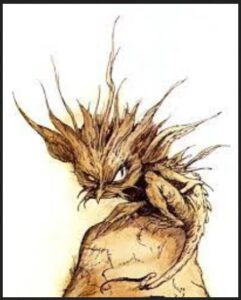
Photo by Gustavo Lacerda on Flickr angs school gustavo-lacerda-1
Available under Creative Commons Licence
“Katharine Briggs (8 November 1898 – 15 October 1980) was a British folklorist and writer, who wrote The Anatomy of Puck, the four-volume A Dictionary of British Folk-Tales in the English Language, and various other books on fairies and folklore. From 1969 to 1972, she was president of the Folklore Society, which established an award in her name to commemorate her life and work.” [Wikipedia]
Her book “A Dictionary of Fairies” has been a favourite of mine since childhood. I’ve read it again and again. I’ve loved it so much it started to fall apart and I had it re-bound. The book has since been published under the title, “An Encyclopedia of Fairies“.
Briggs was a passionate, accurate and thorough researcher. She had a PhD with a thesis on Folklore in seventeenth-century literature. She wrote many other books on fairies and folklore, as well as a number of children’s books. “A Dictionary of British Folk-Tales in the English Language: Part A: Folk Narratives (1970)” was re-published in three volumes in 2011 as Folk Tales of Britain, and is described by Philip Pullman in its introduction as the fullest and the most authoritative collection of British folktales that exists.
In 1969 Briggs was awarded the Doctorate in Literature, and made President of the Folklore Society, a post she held until 1972, and which named an award in her honour.
Briggs collected folk tales and fairy tales from people who had learned them, orally, from their forefathers. She found common threads, “types and motifs” within these tales, such as “Mortals as captives in Fairyland”, or “Tree spirits” or “Fairies steal”, or “Mortal not to thank fairy for gifts”. I use many of these motifs in my own work, which is inspired by British and Celtic folklore. One of them is “Golden hair”.
From Katharine Briggs’s “An Encyclopedia of Fairies”:
“GOLDEN HAIR. Some of the FAIRIES were golden-haired, as presumably were the TYLWYTH TEG, or Fair Family, many of the FAIRIES OF MEDIEVAL ROMANCES and the Irish fairies of the TIR NAN OG, but many of them were black-haired and brown-skinned.
“Fair or dark, however, they all set great store by golden hair in mortals. A golden-haired child was in far more danger of being stolen than a dark one. It was often a golden-haired girl who was allured away to be a FAIRY BRIDE, as EILIAN OF GARTH DORWEN was; sometimes, too, the fairies adopted girls of especial beauty, and above all golden-haired, as their special charges; and when they could not protect them they avenged their wrongs.
That said, there appear to be some disadvantages to having golden hair in the Real World!
“Blonde stereotypes are stereotypes of blonde-haired people. Sub-types of this stereotype include the “blonde bombshell” and the “dumb blonde”. Blondes are stereotyped as more desirable, but less intelligent than brunettes. There are many blonde jokes made on these premises. Although chiefly aimed at women, jokes of this style have also been aimed at similar stereotypes associated with men, such as the “dumb jock”, the “surfer dude” and “himbo”.
Wikipedia “Blonde stereotype”
Beautiful golden hair such as that which belongs to the young girl in Gustavo Lacerda’s photo may be the result of albinism, an inherited condition that leads to animals or people (of any race) having very light skin, hair, and eyes. People with albinism are often considered to have a unique beauty. Their hair may be white, auburn or golden.

 Spriggans!
Spriggans!